
views
Storing the Potatoes in Water
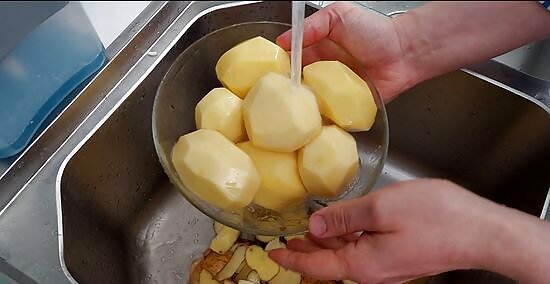
Rinse the freshly-peeled potatoes with cold water. As soon as you’ve removed the thick skin from the outside of the potatoes, hold them under a stream of cold water. Once the water runs clear, set the potatoes aside on a layer of paper towels and gently pat them dry. If you’re preparing a large batch, take care of all your peeling at once, then transfer the potatoes to a strainer and rinse them together. When you peel a potato, the liquid starches inside are exposed to air and quickly begin turning the potato a dark pink or brown hue. Giving them a quick rinse washes away excess starches to slow the discoloration process.
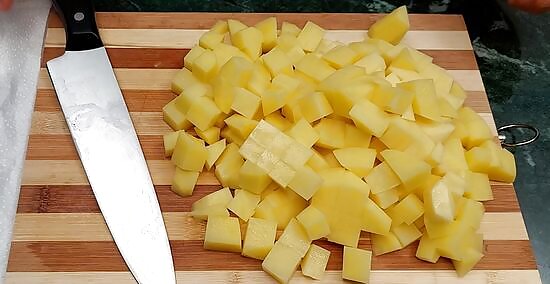
Cut the potatoes to a smaller size if desired. At this point, you have the option of chopping or slicing the potatoes into whatever form a particular recipe calls for. This can drastically cut down on prep and cooking time later. Otherwise, it’s okay to leave them whole. They’ll keep for about the same amount of time either way. Use a knife that’s nice and sharp. Dull knives do unnecessary damage to the potato, releasing more of the enzymes that lead to spoilage. Dice the potatoes into 1.5–2 inches (3.8–5.1 cm) cubes for mashed potatoes, or slice them into ⁄2 inch (1.3 cm) slices for dishes like homemade potato chips or potatoes au gratin. The smaller the potatoes are cut, the faster they’ll take on water. For this reason, it may be best to wait right up to the minute to prep spuds for dishes like hashbrowns, home fries, or vegetable medleys.
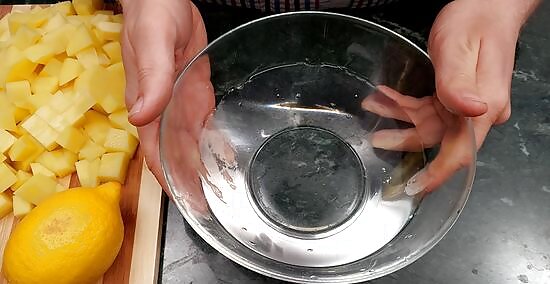
Fill a large bowl with cold water. Choose a bowl big enough to hold all of the potatoes you’re preparing so you don’t have multiple containers sitting around on the countertop or in the refrigerator. Add water to about the halfway point, making sure to leave adequate room for the quantity of potatoes you’re working with. Avoid overfilling the bowl, or it may overflow when you add the potatoes. If mashed potatoes are on the menu, run the water directly into a cooking pot instead of a bowl. When you’re ready to get dinner going, you can simply place the pot on the stovetop and heat the water to a boil.
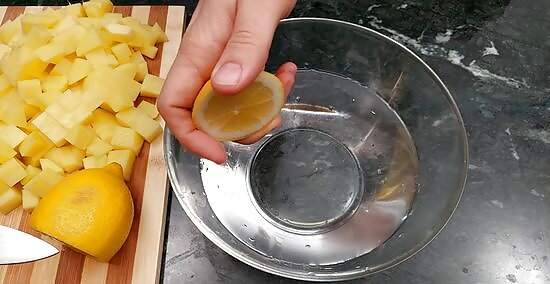
Add a splash of lemon juice or vinegar. Squeeze a few drops of an acidic ingredient like citrus or distilled white vinegar into the water and stir until it’s completely distributed. There’s no single correct amount of acid to use, but a good general measurement is approximately 1 tablespoon (14.8 ml) for every gallon of water. For a standard 2–5 US-quart (2,000–5,000 ml) mixing bowl, this will be about ½-1¼ tablespoon. The acidic component shouldn’t impact the flavor of the cooked potatoes.
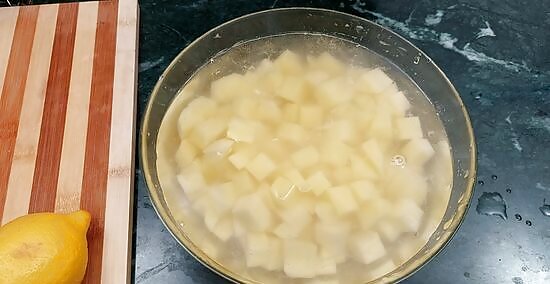
Place the potatoes in the bowl of water. Make sure there’s enough water in the bowl to cover the potatoes entirely. Once they’re submerged, they’ll be out of reach of the oxygen in the surrounding environment, which will keep them from going bad. Potatoes release gases as they decompose, so if they’re floating near the surface of the water, it may be a sign that they’re not as fresh as you thought.
Keeping the Potatoes Fresh

Cover the bowl. An airtight storage container with a locking lid will provide the best results. If that's not an option, stretch a sheet of plastic wrap or a piece of aluminum foil over the mouth of the bowl and press the edges down over the rim to create a seal. This will keep the contents off-limits from the air and minimize the chances of an accidental spill. Squeeze as much air out of the storage container as you can before sealing it up.
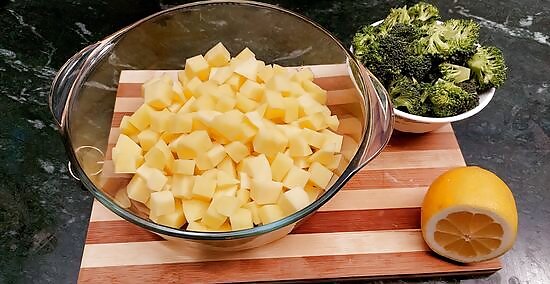
Use potatoes stored at room temperature within 1-2 hours. There’s no need to refrigerate the potatoes if you’re going to be cooking with them. Just leave the bowl out on the countertop and remove the potatoes from the water when you need them. They shouldn’t display much discoloration, if any, after such a short time. Room temperature storage can be useful if you prefer to prep all your ingredients at one time before before moving onto cooking.

Refrigerate the potatoes for up to 24 hours. If you’re not going to be cooking the potatoes right away, it will be necessary to keep them chilled. Place the bowl on one of the middle shelves in the refrigerator and leave it there overnight. Be sure to drain the water from the potatoes the following day if they’re destined for the oven or frying pan. Wet-storing potatoes for longer than about a day can cause them to become water-logged, which may affect their flavor or texture.
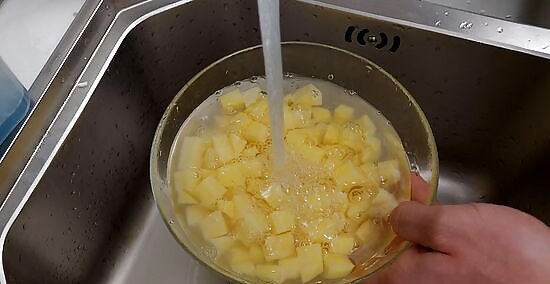
Change the water as needed. Sometimes, the water you’re using for storage will begin to show signs of discoloration rather than the potatoes themselves. When this happens, simply drain the bowl into a strainer, then return the potatoes to the original bowl and add fresh water. If left to sit in the dirty water, the potatoes will be soaking in the same enzymes that cause them to turn brown under normal conditions. Most of the enzymes will leach out in the first couple of hours, so you shouldn’t have to change the water more than once.













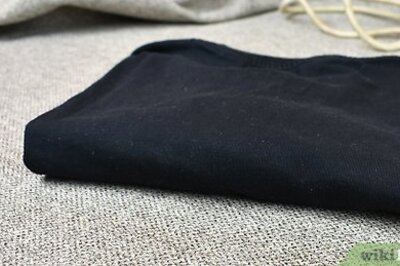

Comments
0 comment